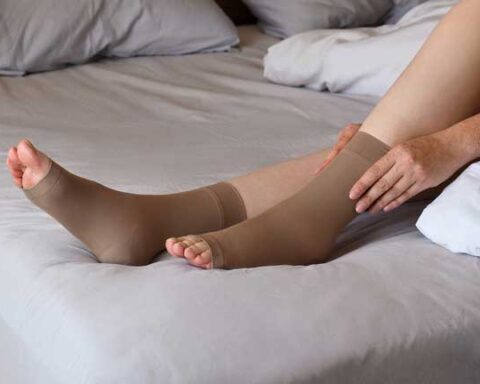As an adult leading a fitness-focused lifestyle, deciding between Invisalign and traditional braces involves not just aesthetic considerations, but also how your choice impacts your daily activities, including your exercise routines. Orthodontic treatments are no longer just for teens. More adults are opting to correct their dental issues for both health and cosmetic reasons.
Here, we’ll delve into a comprehensive comparison between Invisalign and traditional braces, focusing on their impact on an adult’s active lifestyle. For treatment of tooth discoloration Sunnyvale dentist can offer effective solutions to restore your smile’s brightness.
Understanding Invisalign and Traditional Braces
Invisalign is a modern orthodontic method that uses a series of clear, plastic aligners to gradually move teeth into the desired position. These aligners are custom-made using 3D computer imaging technology. Invisalign is prized for its discretion and the ability to remove the aligners during meals or when drinking anything other than water.
Traditional braces, on the other hand, consist of metal brackets that are glued to the teeth connected by wires. Periodic adjustments by an orthodontist tighten these wires, slowly shifting the teeth. Braces are highly effective for treating complex dental issues but are more visually prominent and can affect oral hygiene maintenance.
For those looking to explore both options, Dietrich & Kelso Orthodontics offers a comprehensive range of treatments including both Invisalign and traditional braces. They specialize in customizing treatment plans to fit the unique needs and lifestyles of their patients, ensuring optimal results with a focus on comfort and convenience. Consulting with a professional can help you decide which treatment is best suited to your orthodontic needs.
Lifestyle Considerations
1. Comfort and Convenience
For those who maintain a vigorous fitness regimen, comfort is paramount. Invisalign offers a significant advantage here due to its smooth plastic design, which eliminates the risk of having brackets that might cause irritation or minor injuries during high-intensity activities. Athletes, especially those engaged in contact sports, might find Invisalign more suitable as it reduces the risk of mouth injuries.
However, the convenience of being able to remove Invisalign can be a double-edged sword. Aligners must be worn for at least 22 hours per day to be effective, requiring discipline and routine, which can be challenging during long workouts or sports competitions.
2. Dietary Restrictions
Traditional braces come with dietary restrictions; hard and sticky foods are off-limits as they can damage the brackets and wires. For fitness enthusiasts who rely on specific diets or like to snack on nuts or protein bars, this can be inconvenient. Invisalign aligners are removed while eating, so there’s no restriction on food intake, allowing for a more flexible diet which can be a significant advantage.
3. Oral Hygiene
Maintaining excellent oral hygiene is easier with Invisalign because you can remove the aligners to brush and floss normally. For those who engage in extended physical activities, especially in environments where they might not be able to clean their teeth immediately, Invisalign offers a cleaner alternative. With braces, brackets and wires can trap food, and inadequate cleaning can lead to plaque buildup and potential oral health issues.
4. Treatment Duration and Visits
Treatment duration varies by individual case but tends to be comparable between the two options, typically ranging from 6 to 24 months. However, Invisalign often requires fewer visits to the orthodontist since several sets of aligners are given in advance, which is ideal for adults with busy schedules.
Impact on Fitness Routines
1. General Discomfort
Both options can cause general discomfort, especially after adjustments or switching to a new aligner. This discomfort can sometimes affect physical performance, particularly in fitness disciplines requiring high concentration.
2. Endurance and Cardio Workouts
During strenuous cardio sessions, heavy breathing is common, and having a non-irritative oral appliance is essential. Invisalign’s smooth edges are less likely to cause any irritation or discomfort, making it generally more comfortable for endurance athletes.
3. Weightlifting and Bodybuilding
Intense exertion during weightlifting can lead to clenching and grinding of teeth. Invisalign can act almost like a protective layer, preventing direct tooth wear. Conversely, traditional braces could pose a risk of injury or discomfort during such activities.
Aesthetic and Psychological Factors
For many adults, the aesthetic aspect of orthodontic treatment is crucial. Invisalign’s discreet appearance can boost confidence, which is essential for maintaining a positive self-image, especially for those who engage in public speaking or are often in the public eye.
Long-Term Dental Health and Fitness Alignment
1. The Impact of Straight Teeth on Overall Health
Straightening your teeth is not just about achieving a more attractive smile; it has significant health benefits that can complement a fitness-focused lifestyle. Properly aligned teeth are easier to clean, reducing the risk of periodontal disease, which has been linked to heart disease, diabetes, and other chronic health conditions.
Furthermore, correcting misalignments can alleviate issues such as improper chewing, jaw pain, and even headaches, thereby improving overall physical health and athletic performance.
For individuals frequently involved in sports or physical activities, this means less distraction from discomfort and more focus on performance. The choice between Invisalign and traditional braces should also consider these long-term health benefits.
While both methods will improve dental alignment, the ease and effectiveness of maintaining oral hygiene with Invisalign might be more aligned with the needs of active individuals who need to manage their health efficiently.
2. Adapting to Changing Needs
As an adult, your body and activities may change, and so can your orthodontic needs. Engaging in a consultation to assess which orthodontic option is more adaptable to your lifestyle is crucial.
For instance, if you are engaged in activities that involve a lot of physical contact or where facial injuries are a risk, the removable nature of Invisalign provides an advantage as it can be taken out during such activities to reduce injury risk.
On the other hand, if your activities or fitness routines change over time, the flexibility of being able to remove Invisalign means you can adapt more easily without further treatment adjustments. This is especially beneficial for those who participate in seasonal sports or who may see fluctuations in the type of physical activity they engage in throughout the year.
Conclusion
The decision between Invisalign and traditional braces is a significant one for adults leading a fitness-focused life. It’s important to weigh the pros and cons of each in terms of not only immediate comfort and aesthetic desires but also the long-term health benefits and the flexibility to adapt to lifestyle changes. By considering how each option aligns with your personal health goals and daily activities, you can choose an orthodontic treatment that truly fits with your dynamic lifestyle. Always discuss your options with an orthodontist who understands your health priorities and can guide you to the right choice based on your specific dental and lifestyle needs.
Stay in touch to get more updates & news on Essential Tribune!








